
Newsletter of the Shell Club of Sydney
NSW Branch, The Malacological Society of Australasia Limited ACN 067 894 848
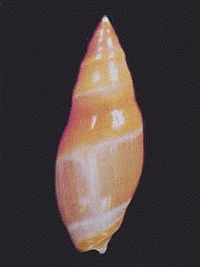
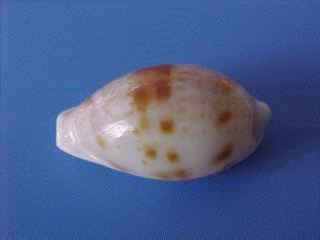
A.Hilgendorfi Richeri
Rashleighana Pseudoteres
Courtesy Vincent CRAYSSAC
February Minutes
The 27/02/99 meeting was opened by Steve Dean at 2.01pm. No apologies other than standing apologies were received. Visitor Ian Matiske was warmly welcomed.
New Shell Acquisitions R. Moylan reported on a number of Caribbean species he had obtained, in particular 24 specimens of
Conus cedonulli Linnaeus, 1767 demonstrating colour, shape and size variation within the species.
P. Jansen added that this species had a large synonym and a number of authors were in conflict over its taxonomy. C. Barnes passed around a number of Cypraeidae species collected from Little Bay NSW. Of particular interest was a specimen of
Cypraea teres Gmelin, 1791, collected in a rock pool fresh dead, believed to have been preyed upon by an octopus.
New Items J. Dunkerley reported on a land snail found on a bunch of grapes, this particular small, white snail,
Theba pisana ( Müller, 1774) is apparently a European pest of some note. D. Beechey added that this pest had been damaging sultana production and people were being hired to remove them. John also displayed a Conus sp. from Mutton Bird Island near Coffs Harbour.
E. Woodhouse handed around a number of specimens of Sphaerospira zebina
( Brazier, 1878 ) from Townsville, which J. Leroi had supplied earlier at the Sydney Shell Show. Elizabeth also displayed a specimen of
Tylospira scutulata ( Leach, 1814 ).
Field Trip Reports D. Beechey reported on a visit to the Solomon Islands, which he had undertaken as a development project, through Community Aid Abroad. Des discussed the land snails he and the villagers had observed and collected during his stay on Makira. One species that stood out was
A. miltocheilus stramineus
( Brazier, 1895 ) an intense green coloured shell, whilst live, with a red lip.
Book Reviews M. Keats distributed three news letters, Waves, NSW Regional Ripples and Sydney's Rocky Shores. Michael added that Jack Hannon from Fisheries was a keen collector and would be attempting to attend the October meeting.
P. Jansen reported that Christa Hemmen had given up publishing and was writing a book on Cancelleriidae. Input on the subject from interested parties would be well received and acknowledged by the author.
General Business Io Myers reported that the balance from the Sydney Shell Show was over $5,000 and this would be handed over to the treasurer.
R. Moylan raised the issue of a shell cleaning machine to be purchased by the group and offered to investigate costs and availability.
Kathleen Mc Camley offered a vote of thanks to Dr Chris Dickman of the RZS for having us, and added Frank Mc Camley had spent 30 years on the board. J. Dunkerley reported that the group had a current balance of $692.00.
After a group discussion about MSA NSW branch membership fees, M. Keats moved a motion to - "Continue branch membership fees on an annual basis, per family". Motion seconded by
J. Dunkerley and passed unanimously.
A. Miskelly inquired of M. Keats about the correct procedure for renewing a collection permit and Michael informed Ashley the permit was issued to himself for scientific study. He stated that Ashley would need to approach Fisheries on his own behalf to apply for a permit, as Michael did not intend renewing said permit due to other commitments.
Presentations J. Dunkerley entertained the meeting with his presentation on the Solomon Islands. John's presentation included some great slides, including aerial shots. John regaled the meeting with some of the more interesting events and customs he had observed during his trips to the Islands from Rabaul to Honiara in 1971 and drew comparisons with his recent visit.
Meeting closed at 3.15pm.
C. Barnes, Secretary
April minutes
Held on 24/04/99. Meeting opened by C. Barnes at 2:02pm. Apologies received from M. Keats, D & E. Woodhouse and standing apologies. Visitor Umberto Aubry (From Italy) was welcomed to the meeting, Umberto is an expert on the family Terebridae. An orthopaedic surgeon, his visit to Sydney was primarily for a conference but fortunately was able to make contact via D. Beechey and attend the meeting.
Field Trip Reports P. Jansen reported on a field trip to Newport, displaying a specimen of
Haliotis brazieri Angas, 1859 and handing around an exceptionally large specimen of
Cypraea caputserpentis Linnaeus, 1758.
R. Moylan reported on a sailing trip from Bundaberg to the Solomon Islands. A number of reefs were visited and some fine specimens acquired. Ron added that there had been a lot of unrest between Guadacanal & Malaita Islanders.
C. Barnes reported collecting a fresh dead specimen of Cypraea cernica Sowerby, 1870 found beached on the high tide mark in Little Bay, Sydney.
Book Reviews D. Beechey gave a short review of The "pulchra complex" Revision of Cymbiola (Cymbiolacca) from East Australian Coast, by - Patrice Bail & Allan Limpus, January 1999. Des mentioned that the groups taxonomy had been under discussion for some time. The group is made up of many forms apparently undergoing speciation due to isolation.
General Business P. Jansen announced she had received some books from Christmas Island and also had a couple of calendars if anyone was interested. Patty also mentioned the Keith Sutherland Award and an anonymous letter from a NSW MSA member which questioned the allocation of funds, to be published in the next edition of Australasian Shell News. F. McCamley donated thirty copies of Keppel Bay Tidings dating back to 1965 as raffle prizes.
Presentations P. Jansen gave a slide presentation and lecture on photographic techniques involved in taking shell pictures. Through trial, error and collaboration she has been able to develop a satisfactory method.
Meeting closed at 3:10pm.
C. Barnes, Secretary
May minutes
The 22/05/99 meeting was opened by P. Jansen at 2:14pm. Apologies were received from D. Beechey and standing apologies. Visitors were warmly welcomed.
Field Trip Reports M. Keats reported on a recent visit to China. Michael explained shelling in the south was near impossible due to pollution. Michael handed around a large river mussel and the wonderful pink cultured pearls that had been harvested from it. He explained how at the farm, female shells were implanted with pieces of male flesh and sewn shut, then they were tethered to cables in groups of around two hundred and suspended in the river until collection. Michael was also able to acquire some land snails from a very steep limestone mountain at an altitude of 6000 to 7000 feet. Michael described Shanghai as futuristic, with the Mitsubishi building second largest in the world and what is believed will be the tallest currently under construction. A. Miskelly described a recent visit to Bottle & Glass Rocks with Ernie Uhle, though did not wish to go into too much detail and thus pre-empt his presentation.
C. Barnes reported on yet another visit to Little Bay, this time finding a very fresh dead
Cypraea ziczac Linnaeus, 1758 in rocks at low tide and also photographing a live specimen of
Cypraea humphreysii Gray, 1825 at the same location.
Book Reviews P. Jansen with the latest edition of La Conchiglia. M. Keats handed out copies of NSW Regional Ripples and Waves to the meeting. Thank you very much Michael, for your efforts.
General Business Treasurer J. Dunkerley reported a current balance of $848.00. John reminded members that annual fees are due.
M. Keats raised the issue of the AGM and the necessary notices. F. McCamley presented a large number of past Keppel Bay Tidings for the group raffle.
Presentations A. Miskelly reviewed and added to his presentation from the Second National Sydney Shell Show. Displaying slides and presenting specimens, Ashley had the group quite astonished with the Urchins and shells he has been able to observe and collect from Sydney Harbour in recent years.
Meeting closed at 3:00pm.
C. Barnes, Secretary
New Shellfish Museum Opened
A new museum specialising in shellfishes opened in Nishinomiya, Japan on May 7, 1999.
About one hundred thousand kinds of shellfishes are found in this world. About 2,500 kinds are exhibited in this new museum which is established by the City of Nishinomiya. Some rare kinds of this creature such as the "Nautilus" can be seen live at one of their water tanks.
Nishinomiya City Museum of Shellfishes
4-13-4, Nishinomiya-hama, Nishinomiya-shi, Hyogo-ken, Japan 662-0934
voice: +81 (0) 798-33-4888
fax: +81 (0) 798-33-5888
American Malacological Society
Workshop for Amateurs.
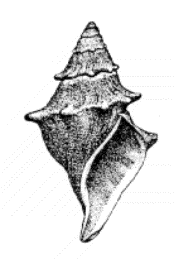
7 July 99, Pittsburgh, PA
The American Malacological Society (formerly the American Malacological Union) will be holding its annual meeting on July 4th to 8th in Pittsburgh, PA. As part of its outreach to the amateur community, it is hosting a workshop on topics of interest to amateur malacologists and conchologists.
For those not interested in attending the whole meeting, the workshop will be held on Wed. July 7th. The speakers are a varied group but all have roots as amateurs or are professionals that have a strong interest in helping the amateur community.
For those on the Conch-L discussion group, many of the names will already be familiar. Charlie Sturm, a research associate at the Carnegie Museum in Pittsburgh will start off by discussing the archival practices used in modern day collections. What material is available and where to obtain it will be covered. Learn what is new in inks, paper and the archival nature of computer printers and long term electronic storage of information. That bane of collectors, Bynes Disease, and ways to combat it will be covered. Since Charlie also collects Cenozoic molluscan fossils, some aspects that pertain to these specimens will also be touched on. The emphasis will be on applying these techniques to the private collection.
Gary Rosenberg, Curator at the Academy of Natural Sciences in Philadelphia, will be presenting the ins and outs on database construction. How to construct a database for your shell collection, using Access, Paradox, FileMaker or other commercially available packages. Choosing the right fields and structure for your needs, printing labels and catalogue pages, adding images. Backup systems. Bring your questions and ask a master database designer how to do it.
Jose Leal, Curator of the Bailey-Matthews Museum in Sanibel will be speaking on amatuer-professional relationships. Jose will discuss ways in which the amateur can help the professional malacologist and what the professional can do to help others to get more satisfaction out of being an amateur malacologist. How to get people interested in malacology, club participation and volunteering for museums will also be covered.
Tim Pearce, Curator of Malacology at the Delaware Museum of Natural History will also be participating in this information fest. Tim will be speaking on how amateur collections can be incorporated into a museum collection. He will discuss aspect that need to be addressed so as to get the most out of the donation for both parties. He will also speak on what help the curator and collection manager can provide the amateur to help curate their collections prior to a donation. Also to be covered are the problems associated with museums accepting materials on the CITIS List, and other endangered and threatened species.
Kevin Cummings, Research Scientist for the Illinois Natural History Survey, will be on hand to tell us all there is to know about those pesky Unionids. To most of us they are only green or brown clams found in freshwater. Kevin will set us straight. Kevin will discuss how to collect unionids and what the general, that is legal and conservation issues, are that impact on collecting these mollusks. Kevin will also review some of the literature that is available for identifying these shells and how to maintain a collection of freshwater mussels. This will be a good introduction for anyone signing up for the field trip on Friday, July 9th. This trip, led by Art Bogan, will visit sites in Southwestern Pennsylvania where unionids can be found. Space for this trip is limited so those interested should sign up now.
The last speaker, well known to most of us, will be Dick Petit. Dick will be speaking on the breath of the literature in malacology. If you do not know who Sherborn is or what the Zoological Record is useful for, this discussion will be for you. The discussion will review some of the main journals, books, and series in malacology. Bring your questions dealing with the malacological literature and Dick will help you out.
After the "formal presentations" the speakers will be available for a round table discussion on topics brought up by the participants in the workshop. A few hours after the end of this session the AMS evening session will begin. There are several book dealers that are expected to be displaying their stock. Also, the Annual AMS Auction will be held at this time. Books, art work and shell related items (but no shells) will be auctioned off. It should be an exciting time for all.
If you have any further questions please visit the AMS website, ( http://erato.acnatsci.org/ams/
), or contact me at csturmjr@pitt.edu
Sydney Shell Collectors Club Inc poster getting used:
Letter from Jan Dunn, Manager of the Sydney Children's Museum (KIDSEUM)
"I received via Marian Haire, Science Teachers Association, a poster called 'Sea Shells of Sydney'. I would like to let you know how an exhibit has been developed from this lovely poster.
Most of the children who visit the museum are aged between four and then years therefore we needed to develop something simple. In keeping with our hands on approach we developed some feeley boxes and with the help of Alison Miller at the Australian Museum who donated shells, and some wonderful books for us to photograph the animals who live in the shells. The shells were glued onto boards inside a box the children put their hands through the hole into the box and feel the shell. Is it smooth, has it got ridges is there a hole where the animal used to live? These are the questions we are asking them to solve. They can then lift the lid on top of the box and see the shell and read about the animal from the information on the lid of the box. The next step is to identify the shell on the poster. The children are enjoying looking at the shells especially as the shells can be found on beaches throughout Sydney.
I would like to thank you very much for this wonderful colourful poster that has developed into a learning experience for the children who visit."
New-Caledonian rare C.Rashleighana Pseudoteres
By Vincent CRAYSSAC
The existence of C.Rashleighana Pseudoteres has brought up certain questions and this is the reason for which I have decided to recall the data relating to that cowry. The problem consists mainly in the fact that the juvenile shell is very similar to
C.Teres, so much that some mistakes in identifying are often made.
First of all, C.Rashleighana has been registered by Shilder
& Schilder as mentioned in their " Prodrome of a monograph on living Cypraeidae" page 169 n°111 (edition 1938 ) in which they wrote : " the melanesian variety is smaller than the Hawaiian eunota, with the columellar teeth more numerous and the colour approaching
C.Teres (melanesian variety = subfasciata ), as the dorsum is bluish with three areas instead of pale grey (even in non-pellucid shells!) with the terminal areas much less distinct than the broad central area. Furthermore, the lateral spots are dark brown instead of ferruginous; dilated and pellucid varieties have been observed in eunota only". Regarding Melanesia, it is stated that it was collected more particularly in New-Caledonia and Lyalty Islands.
The shape of the shell often gibbous is a detail which should draw our attention. However, the main characteristic which distinguishes it easily from
C.Teres, is the overlapping towards the top of the dorsum (approximately half) of the whitish columellar margin which is already noticeable on juvenile specimens as well as on sub-adult specimens. The columellar margin is splashed with relatively numerous spots whereas only two to three spots (if any) are to be seen on
C.Teres.
| |
BURGESSI |
RASHLEIGHANA |
TERES |
RASCHLEIGHANA PSEUDOTERES |
|
Shape |
elongated ovoid, anterior extremity prominent |
circular anterior extremity produced |
ovoid, often elongated ovoid to cylindrical extremities produced |
circular, anterior and posterior extremities produced |
|
Spotting |
small, ( 0.5 to 1.5mm),extend 1/4 to 1/2 across columellar and 1/4 to 1/3 across base |
labial base small ( 0.5 to 1.2mm) extend across columellar base and 1/3 across labial base. Extend almost to middle dorsum on fully adult shells |
small, faint, ( 0.5 to 1.5mm)
diam. to 6 or 8, on or above labial margin, |
small ( 0.5 to 1mm ), extend 1/3across columellar base and 1/3 across labial base. Extend almost to middle dorsum on fully adult specimens |
|
Columellar Margin |
heavy and produced, but not as much as rashleighana |
heavy, produced and sharp( specific characteristic ) |
not callous |
slightly sharp |
Maximum sizes known are :
Burgessi : 49.5mm - Rashleighana : 29.1mm - Teres : 48.6mm
Maximum sizes known in New-Caledonia :
Burgessi : absent - Rashleighana Pseudoteres : 24.4mm - Teres : 45.9mm
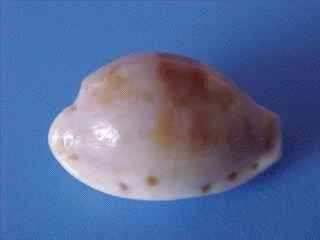
Rashleighana
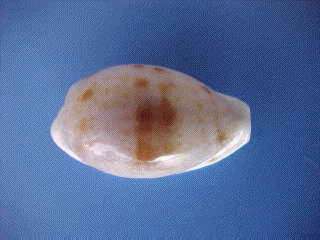 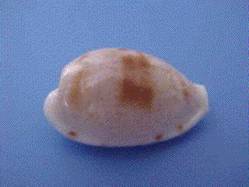
Rashleighana Pseudoteres
Range distribution of New-Caledonian Amaldas
By Vincent CRAYSSAC
In the late 80's, a few new Ancillinae from the New-Caledonian region have been reported from several deep sea programs carried out in the area since 1978. Actually, four new deep water species and one subspecies have been described from the New-Caledonian region :
A. Aureomarginata, A. Fuscolingua, A.Coriolis, A.Bellonarum, A.Hilgendorfi Richeri
Before, that genus was only known by the presence of A.Montrouzieri ( Souverbie, 1860 ).That specie, mainly found on white coral sand in the lagoon, has a range distribution that seems localised around the southern part of New-Caledonia, from St Vincent Bay to Pines Island at depths going from 5m to 70m. However, we can note some extralimital records from Fiji and Ryuku Islands.
A.Aureomarginata, Fuscolingua and Hilgendorfi richeri are Bathyals species from New-Caledonia. They can be found, living on coarse bottoms, rich in stylasterids, stylasterid fragments, shells and other biogenic debris at depths situated between 300m up to 600m.
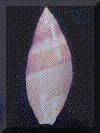
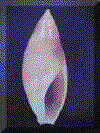
A. Aureomarginata
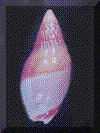
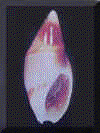
A. Fuscolingua
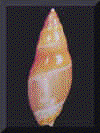
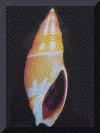
A.Hilgendorfi Richeri
A.Coriolis is only known from the Capel and Kelso Banks, at depths situated between 150m up to 300m. It is interesting to note that it was taken neither on to the Argo or Nova Banks, nor on the Chesterfields-Bellona Plateau, although these areas were sampled at similar depths on the same expedition.
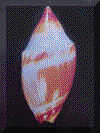 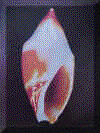
A.Coriolis
A. Bellonarum, is only known from the Chesterfield-Bellona plateau, Coral sea, New-Caledonia in about 50m-250m.
That last specie, closely resembles to A.Rosea ( Macpherson, 1956 ) which is found in the Queensland and New-South Wales littoral. Despite the close morphological resemblance between the two species, their respective range distribution is separated by an abyssal barrier.
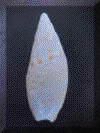
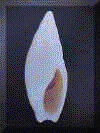
A.Bellonarum
Discussion:
The areas situated to the east of New-Caledonia ( Vanuatu, Fiji, Tonga etc... ) have not been sampled yet, at comparable depths making difficult the determination of the endemic aspect of these New-Caledonian deep water species.
For example A.Hilgendorfi richeri is the New-Caledonian representative of a species that has evolved into subspecies into China Sea and in the western Indian Ocean; no evidence is yet available as to whether the ranges of the subspecies are disjunct or continuous. The group of species to which
A.Coriolis belongs is know primarily from the Miocene and Pliocene of New-Zealand, with only two other recent members:
A.Raoulensis, Powel 1967, from the Kermadec and A.trachyzonus, Kilburn, 1975, from the East London area of South Africa, clearly indicating present distribution patterns within this group to be
relict.A.Bellonarum appears to be a vicariant of the Queensland
A.rosea (Macpherson, 1956).
The question of dispersal within the New-Caledonian region remains speculative. All six species of New-Caledonian Ancillinae have a paucispiral protoconch, typical of members of the subfamily, in which, non-planktotrophic larval development appears to be the rule. Despite this apparent constraint on larval dispersal,
A.h.richeri and A.aureomarginata are known from isolated slope areas ( chesterfields-bellona plateau and seamounts vs New-Caledonian ridge ) that are separated by abyssal depths. Even if the Lansdowne-Fairway Reef is assumed to be a stepping point between New-Caledonia and Chesterfields, a minimum distance of ca.250km would remain to be traversed. Such a disjunct distribution would seem to indicate that some kind of dispersal is taking place in species such as
A.h.richeri and A.aureomarginata ( although conversely, marked geographical variation in
A.aureomarginata is an indication that genetic exchange between its component population must be infrequent ). The same applies to
A.coriolis, which is known only from the plateau areas of two seamounts that are separated by a short ( ca.80km) strech of abyssal depths. Presumably the paucispiral protoconch in such cases reflects not holobenthic development with intracapsular metamorphosis, but lecithotrophic larval development with a short free-swimming larval phase. Even after metamorphosis, it is not impossible that swimming movements may aid in ancilline dispersal. Although not yet reported for members of the genus Amalda, swimming by means of propodial flapping has often been observed in the related genus Ancillista, Iredale 1936 ( see Wilson, 1969 )
At Coral reef depths, A.Montrouzieri also occurs in discrete areas separated by deep water, and there are a number of extralimital records, indicating that in this species, dispersal across apparent barriers may also take place.
References : The Genus Amalda in New-Caledonia, by Richard N.Kilburn and Philippe
Bouchet.
|
















